Having journeyed through Kosovo multiple times over the years, I’ve come to regard it as a hidden gem within the Balkans, one that more travelers ought to discover.
Each visit has deepened my affection for its rich history, vibrant culture, stunning natural beauty, and the incredible friendliness of its people. My adventures across Kosovo’s cities and landscapes have unveiled a wealth of unforgettable sights and experiences.
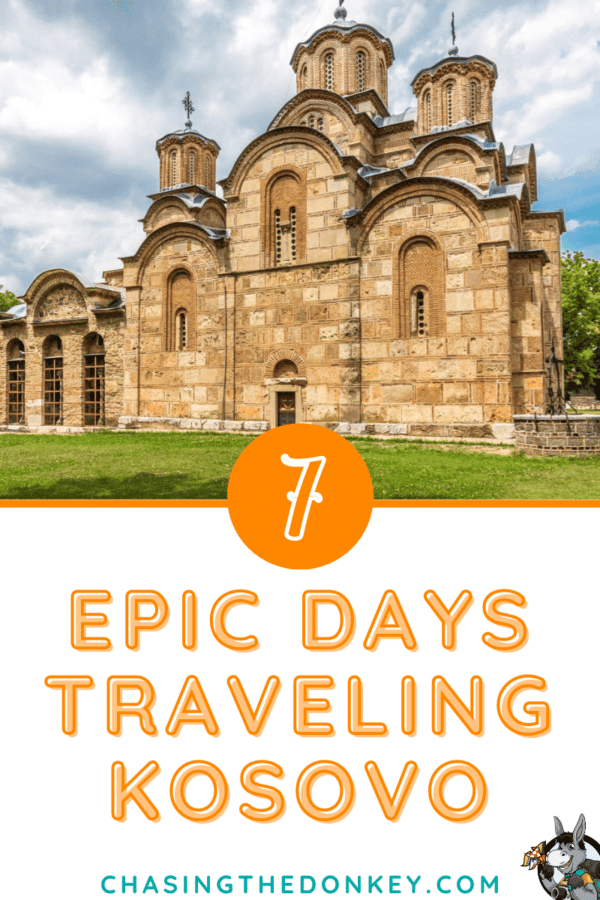
Why am I eager to share these journeys with you? Because I firmly believe in the value of uncovering the beauty and diversity of Kosovo firsthand. For anyone seeking an adventure that’s both unique and filled with moments of wonder, coupled with the warm hospitality of the locals, Kosovo is the place to be.
Are you ready to be inspired? Allow me to guide you through a recommended 1-week itinerary in Kosovo, highlighting must-visit spots and offering insights to enhance your travel experience. By the time you’ve finished reading, I’m confident Kosovo will earn a spot on your travel bucket list.
So, let’s embark on this adventure together and explore the myriad wonders that Kosovo has to offer!
Skip Ahead To My Advice Here!
7 Day Kosovo Itinerary
Day 1: Pristina – Capital City Of Kosovo
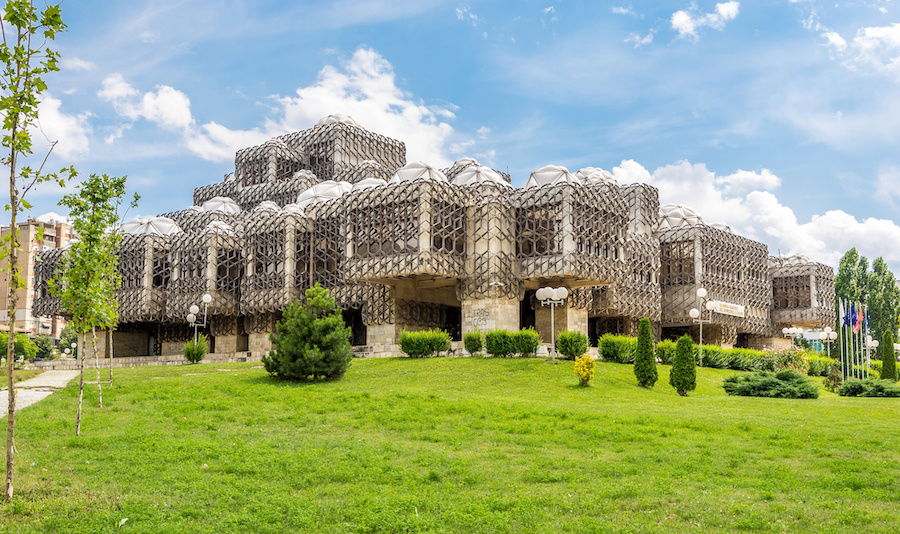
Pristina, the center of Kosovo, will welcome you with open arms. It is the capital and largest city in Kosovo; it’s a melting pot of culture, politics, and entertainment.
From Morning To Afternoon: A Walk Through History And Culture
Begin your trip at the Newborn Monument, a powerful symbol of Kosovo’s independence, painted each year with various themes. From there, you can stroll down Mother Teresa Boulevard, enjoying the atmosphere and admiring landmarks such as the Imperial Mosque and the Clock Tower.
The Ethnographic Museum offers a fascinating glimpse into traditional Kosovar life, while the Bill Clinton statue and accompanying boulevard serve as a reminder of the international support Kosovo has received.
Optional Activities
- Kosovo Museum: for history lovers, this museum showcases Kosovo’s archaeological treasures and historical narratives
- Emin Gjiku Ethnographic Museum: located in one of the most beautiful and well-preserved Ottoman houses, this museum offers a deeper insight into the region’s culture
- Kosovo Art Gallery: art lovers will appreciate the contemporary art exhibitions here
- Shopping in Zahir Pajaziti Square: ideal for buying local handicrafts and souvenirs
Eating And Sleeping In Pristina

- Restaurants: traditional Kosovar fare at Soma Book Station or international cuisine at Liburnia Restaurant; there’s something for every palate
- Accommodation: there is the luxury of the Swiss Diamond Hotel Pristina and the budget-friendly charm of hostels like Hostel Tuba. Pristina has something for everyone
Day 2: Prizren – Great Place For Panoramic Views

Getting from Pristina to Prizren was easy. The bus is a popular and affordable choice at around €5 and reaches Prizren in about 2 hours, enjoying beautiful views of the countryside along the way. For more flexibility, renting a car is also a great option.
Prizren, with its Ottoman heritage and beautiful scenery, is the soul of Kosovo. Walking through its streets is like entering a living museum, with every corner telling a story.
From Morning To Afternoon: A Walk Through The Old Town
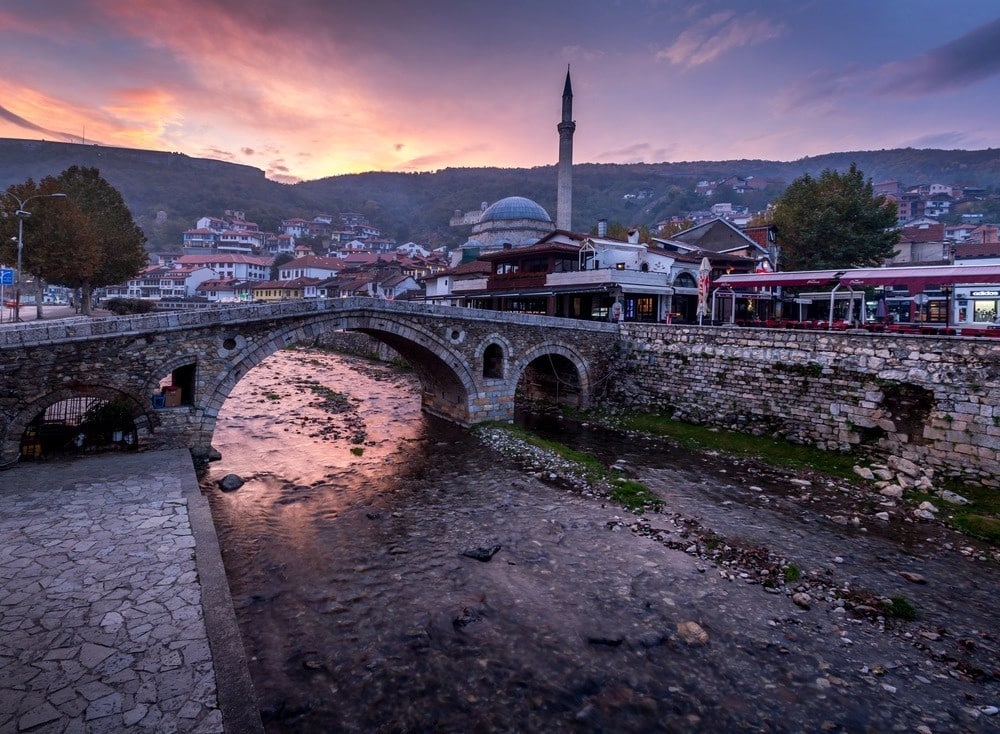
Begin your exploration at the Stone Bridge and walk through animated squares and past historic buildings. Highlights included the Sinan Pasha Mosque, the Halveti Tekke, and the League of Prizren Museum. The climb to Prizren Fortress was a highlight, offering a panoramic view that is simply unforgettable.
Optional Activities
- Prizren Ethnographic Museum: a must for those interested in the local way of life and traditions
- Archaeological Museum: offers an insight into the ancient history of the region
- Shopping at the Bazaar: a great place to find handmade goods and local specialties
- Nightlife: Prizren’s cafes are perfect for experiencing the city’s exciting evening atmosphere
Where To Eat And Sleep In Prizren
- Restaurants: Te Syla serves delicious traditional food, while Ambient Restaurant offers a mix of local and international dishes in a cozy setting
- Accommodation: Hotel Theranda is a fantastic choice for luxury, while budget travelers will find great value at Ura Hostel
Day 3: Gjakova – One Of The Most Underrated Cities In The Balkans
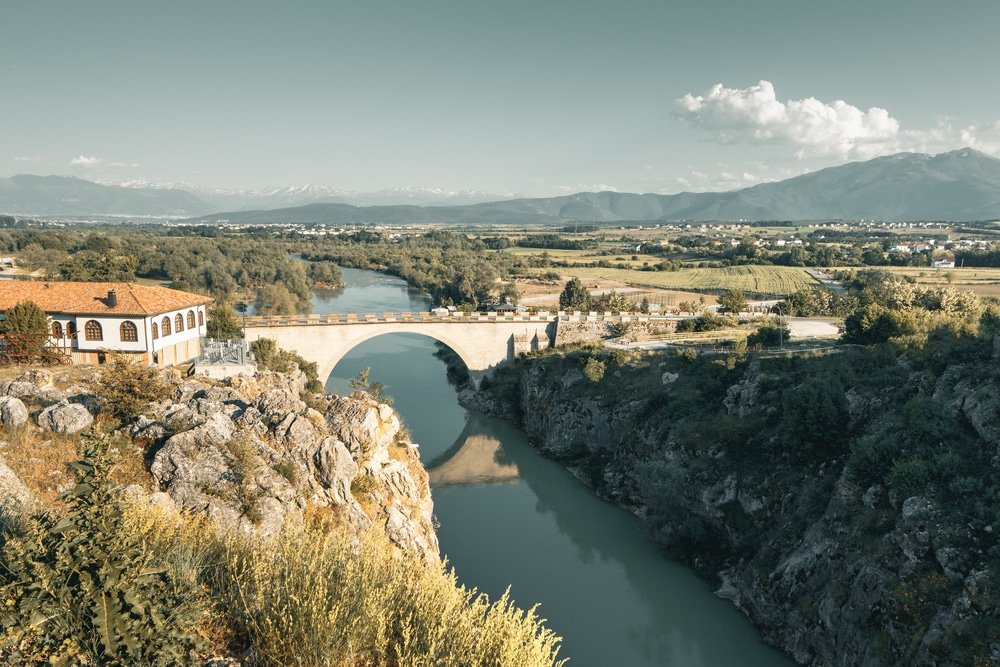
Exploring Gjakova
I suggest you start the tour at the Hadum Mosque, a stunning 16th-century structure, and walk through the Old Bazaar – Kosovo’s largest and a true testament to the city’s historical significance. The Clock Tower and Shejh Emini Tekke add some spirituality to the trip, while Gjakova Cathedral and Ismail Qemali Square display the city’s diverse cultural structure.
Optional Activities
- The Jashar Pasha and Adem Jashari Memorial Museums: for a deeper dive into history, the Jashar Pasha and Adem Jashari Memorial Museums offer poignant insights
- Artisan shops: artisan shops offer unique souvenirs, and the city’s nightlife promises relaxing evenings
Where To Eat And Sleep In Gjakova
- Restaurants: Sarajet e Pashës offers traditional dining, while Carshia e Jupave serves a modern spin on local cuisine.
- Accommodation: Accommodation options range from the cozy Hotel Çarshia e Jupave to budget guesthouses like Kulla Dula.
Day 4: Peja

A one-hour bus ride will take you from Gjakova to Peja. It has a unique atmosphere and rich heritage that are immediately apparent when you get to the city.
Discovering Peja
Start with the Peja Bazaar and go to the Ethnographic Museum for a glimpse into traditional Kosovar life. Along the way, the Bajrakli Mosque, the Haxhi Zeka Mill, and the peaceful Karagaq Fountain will definitely catch your eye and lead you to the spiritual heart of Peja at the Peja Patriarchate and the Church of the Holy Apostles.
Optional Activities
- Museums: The Peja Museum and the UCK Memorial Museum offer enriching historical insights.
- Shopping: Snoop around souvenir shops to find the perfect souvenirs.
- Cafes: And evenings are best spent in Peja’s cozy cafes.
Where To Eat And Stay In Peja
- Restaurants: dining options such as Taverna Tirona showcase local flavors.
- Accommodations: Hotel Dukagjini combines comfort with elegance. For the budget-conscious, Peja Hostel is a welcoming option
Day 5: Day Trip From Peja: Discovering Hidden Gems
Peja, sitting comfortably in the embrace of the Accursed Mountains, serves as a perfect launchpad for some of the most engaging day trips Kosovo has to offer.
Whether you’re an adrenaline junkie, a history buff, or someone who just loves soaking in the beauty of nature, there’s a day trip with your name on it.
Let’s dive into some top picks that promise to make this day of your week in Kosovo unforgettable.
Brezovica Ski Resort
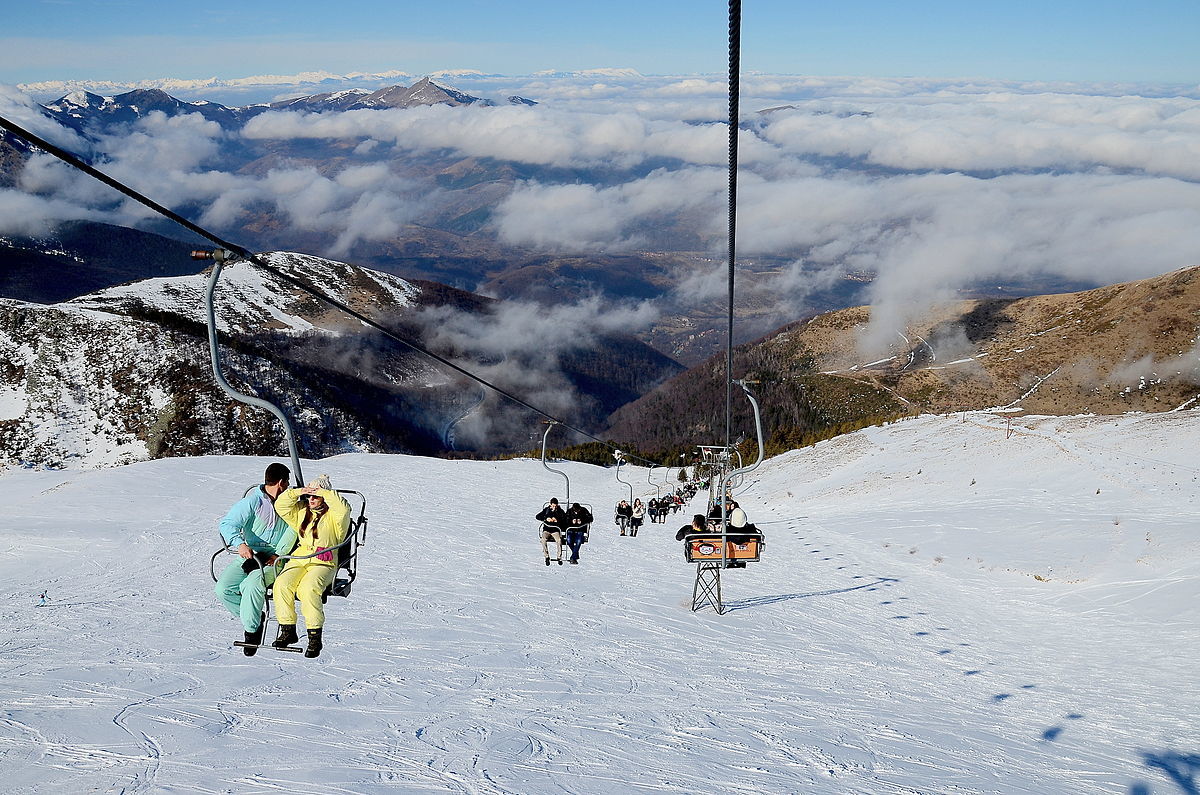
First up, let’s talk about Brezovica Ski Resort. Don’t let the name fool you; while it’s a winter wonderland for skiers and snowboarders, summer transforms it into a paradise for hikers and mountain bikers.
The Šar Mountains offer trails with breathtaking views, and the drive from Peja is a scenic journey you won’t mind making. How to get there? A car ride will take you about an hour and a half, giving you the freedom to stop and admire the landscape or even picnic.
Whether you’re shredding the slopes or conquering mountain trails, Brezovica has a little something for everyone.
The Patriarchate Of Peć Monastery
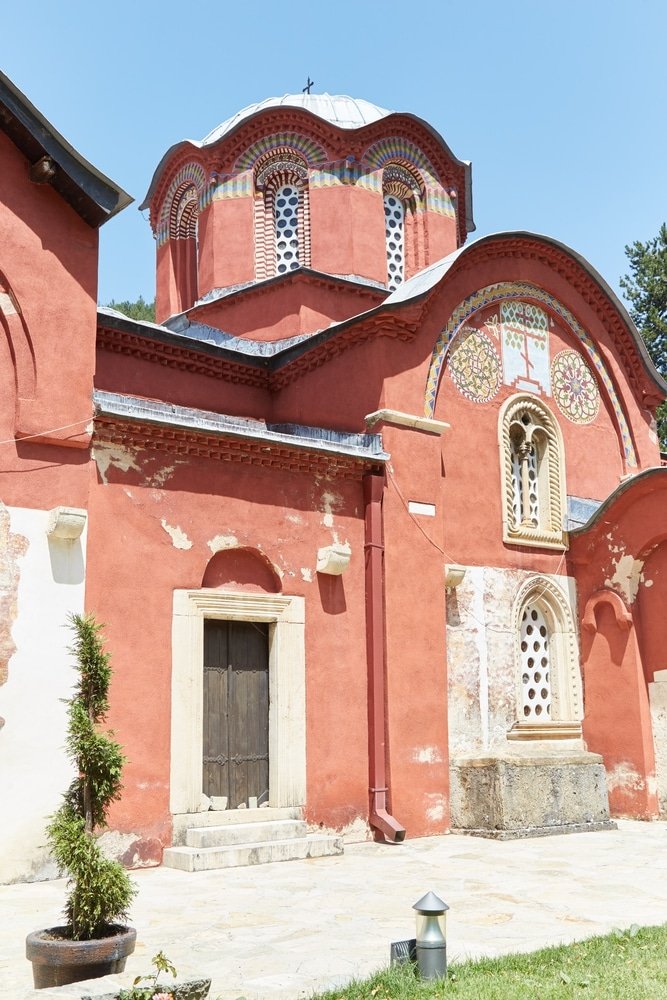
If you’re into the historical vibes and spiritual sites, then you’ve got to check out the Patriarchate of Peć Monastery, just a short hop from Peja—think 15 minutes by car, and you’re there. Trust me, this isn’t just another monastery tour.
This place is a major deal in Serbian Orthodox Christianity, packed with stunning medieval frescoes and architecture that dates way back from the 13th all the way to the 18th centuries.
It’s like stepping into a living history book, where every wall, every corner tells a story of the diverse cultures and faiths that have shaped Kosovo over the centuries. The coolest part? If you’re staying in Peja, it’s basically right there—like having a piece of history right in your backyard.
Gjakova’s Historic Center

If you’re up for a bit of a longer drive, head to Gjakova’s Historic Center, about 45 minutes away. This city is a live museum of Ottoman architecture, with its Grand Bazaar or Çarshia e Madhe being a highlight. It’s one of the oldest bazaars in the Balkans, where you can shop for unique souvenirs, marvel at traditional craftsmanship, or just enjoy a coffee in one of the quaint cafes.
Gjakova is a vibrant city with a friendly atmosphere, perfect for those looking to experience the everyday life of Kosovo beyond the tourist spots.
Each of these day trips from Peja offers a unique slice of what Kosovo is all about—stunning natural beauty, deep historical roots, and warm, welcoming communities. Whether you’re planning your itinerary or just looking for spontaneous adventure, these destinations are sure to enhance your Kosovo experience.
Day 6: Return To Pristina
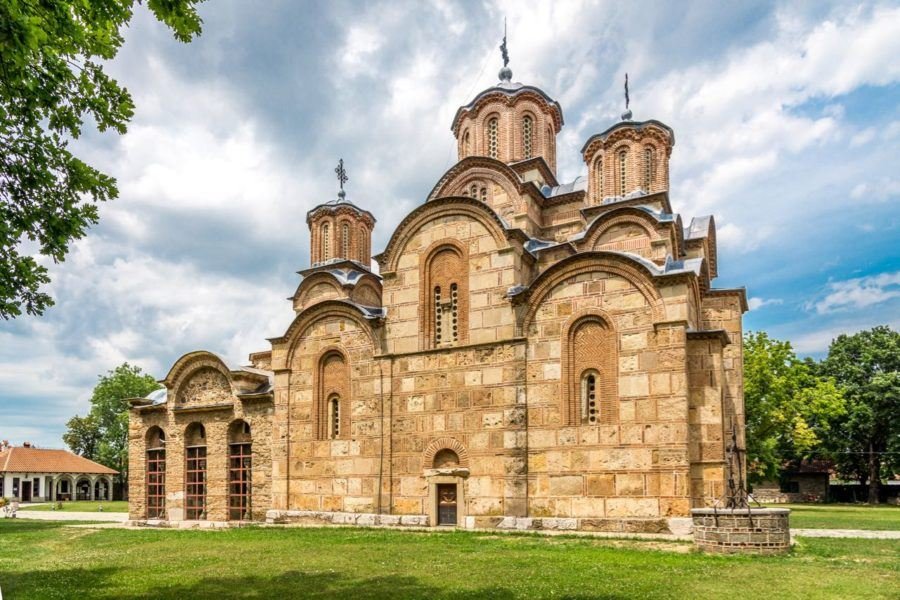
When returning to Pristina from Peja, get ready to enjoy the last day in this beautiful city.
Rediscovering Pristina
This day offers a perfect opportunity to explore the things to do in Pristina that you may have missed or to dive into new experiences. High on your list should be the Gracanica Monastery and the tranquil Germia Park, in addition to making a return visit to the Newborn Monument.
New Discoveries Of Things To Do In Pristina

- The Mother Teresa Cathedral offers breathtaking views and peace
- The Kosovo Government Building and the National Theater added a cultural dimension
- The Skanderbeg Statue stands as a proud reminder of the nation’s heritage
- The Kosovo Art Gallery and National Museum are perfect for a dose of culture
- Zahir Pajaziti Square has everything from souvenirs to local handicrafts
Brands We Use And Trust
The Best Time Of The Year To Visit Kosovo

Visiting Kosovo offers a rich experience influenced by its continental climate. Here’s a broad look at when to plan your Kosovo trip.
Best Time To Visit: April To September
The months of April to September stand out as the best time to visit Kosovo. This is when the weather is at its most inviting, with moderate temperatures that make exploring the cities and the countryside a pleasure.
This time of year also coincides with a busy calendar of cultural events and festivals, offering an immersion into Kosovo’s rich heritage and contemporary life. Music, art, and traditional celebrations, this period ensures that you’ll have plenty of opportunities to enrich your travel experience.
Seasonal Considerations
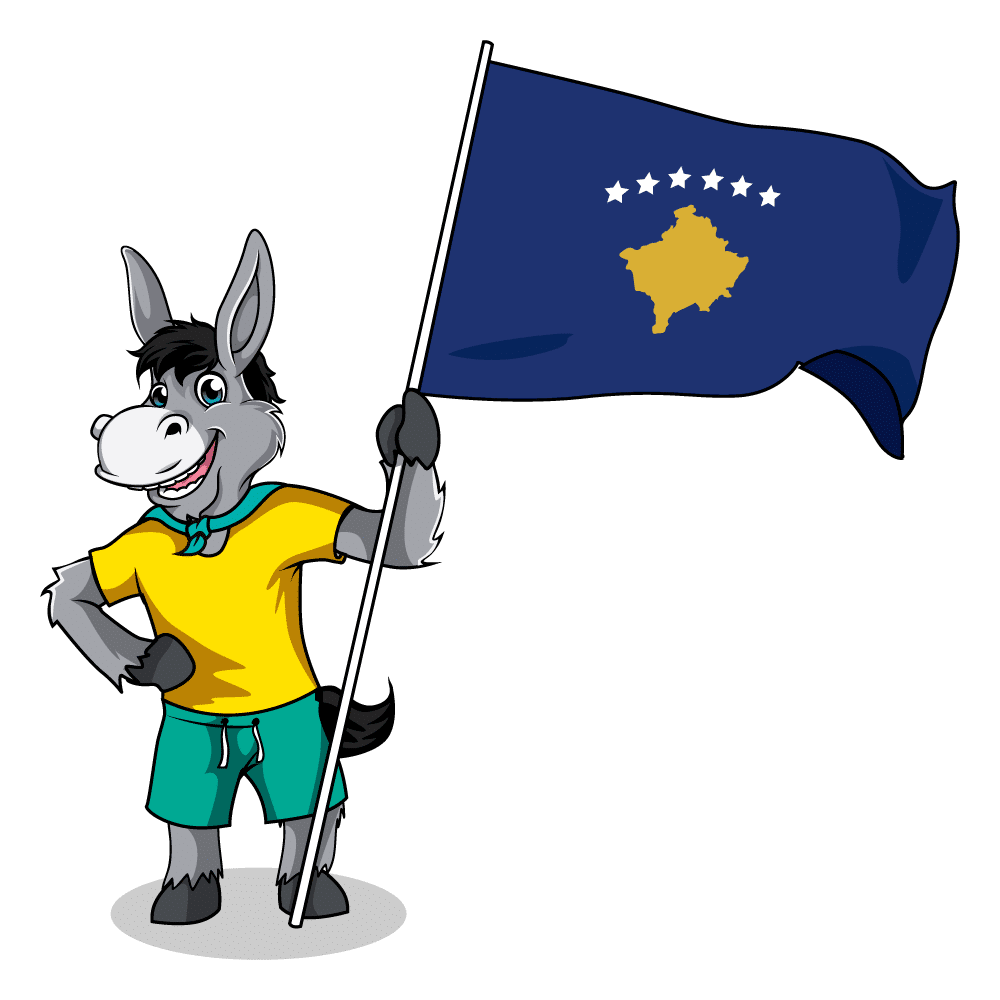
Winter (December to February)
Winter transforms Kosovo into a snow sports attraction, especially around areas like Brezovica that offers skiing and snowboarding for those seeking the best things to do in winter. This season is characterized by lower prices and fewer tourists, which allows for a more intimate view of local life. However, be prepared for colder temperatures, shorter days, and possible limited access to certain attractions due to snow.
Spring (March to May) & Fall (October to November)
These transitional seasons have their own appeal, with fewer crowds and a natural countryside in transition. In spring, Kosovo is flooded with fresh flowers, while autumn brings beautiful colors. These seasons are perfect for outdoor activities such as hiking, as the weather is generally warm, although rain can be more frequent.
Summer (June through August)
Summer is great for those who want to explore Kosovo’s natural beauty, with opportunities for hiking in the national parks, rafting in the rivers, or simply enjoying the street cafes in cities like Pristina and Prizren.
Kosovo Currency
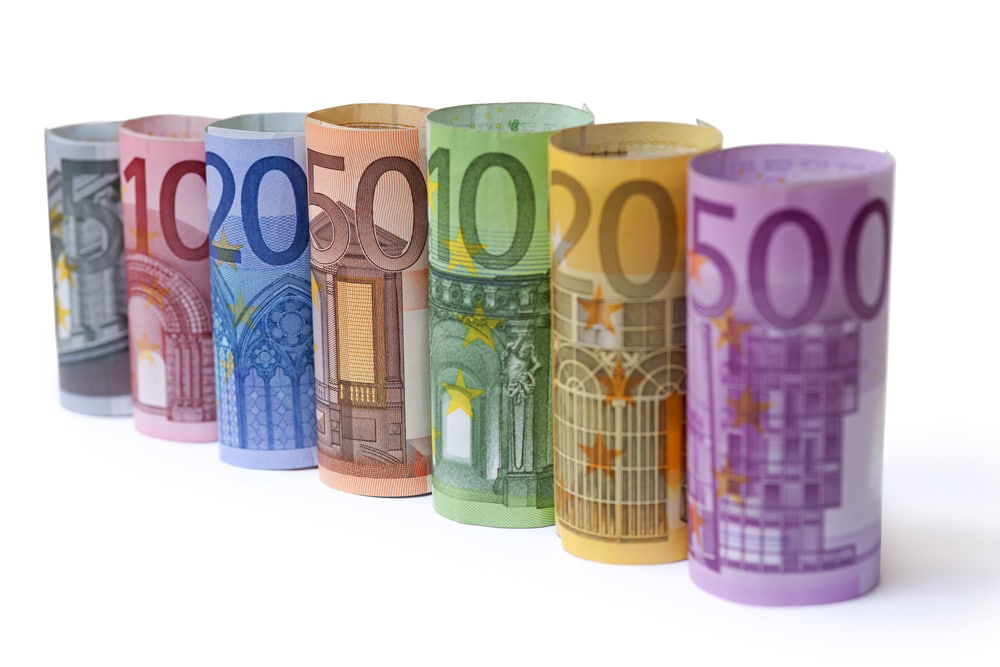
Euro (€): Kosovo has adopted the euro as its official currency.
In some parts of Kosovo, particularly in the north and in Serb-dominated enclaves, you may find the Serbian dinar accepted. But relying on the dinar comes with its own challenges, including exchange rate fluctuations and limited acceptance. For simplicity and ease, sticking with the euro is your best bet.
Cost Of Living And Traveling
Considering the best things to do and see, Kosovo, especially its capital, Pristina, is remarkably affordable compared to many other European countries. Here’s a quick rundown of what you can expect in terms of costs:
- Accommodation: prices vary, but you can find budget options starting at €20 per night, while mid-range hotels can cost between €40 and €70
- Food in Kosovo: a meal at an inexpensive restaurant can cost around $3-$5, while a three-course meal at a mid-range restaurant might set you back $15-$20
- Transportation: public transportation is very affordable, with bus rides within cities costing less than $1. Taxi rides start at about $2, with additional charges per kilometer
- Admission fees: most museums and historical sites have modest admission fees, often under $5.
Accommodation In Kosovo
Pristina

- Hotel Gracanica: Prices start from €52/night. With a pool, garden, complimentary breakfast, and in-house restaurant, this modern hotel is a calm refuge near the Gračanica Monastery.
- Hostel Han: Prices start at €10/night for a budget-friendly social stay. Located in the heart of the city, this hostel offers complimentary breakfast, Wi-Fi, and bike rentals
- City Center Apartment: From €25/night, it’s close to the main attractions and public transport. For those who prefer to prepare their own meals, this apartment has a balcony, a kitchen, and a washing machine
- Hotel Magra Austria: From €40/night. 4-star hotel close to everything.
Prizren
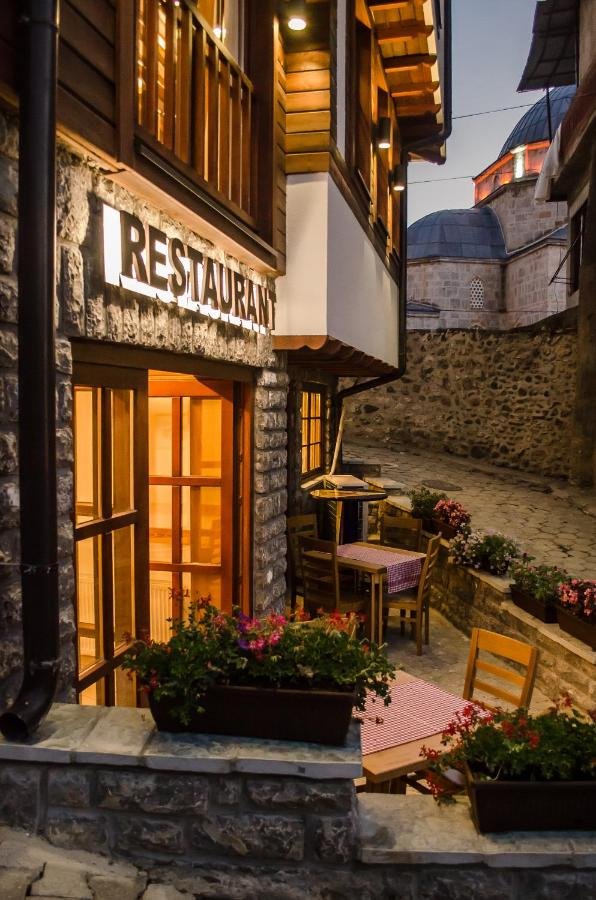
- Hotel Prizreni: From €50/night, you can enjoy luxury with a view. Overlooking the Prizren Fortress and the Bistrica River, this hotel has a rooftop terrace, sauna, and gym
- Driza’s House: From €15/night, it’s a comfortable base for exploring the city’s historic streets. This guesthouse in the old town offers a fireplace and homemade breakfast.
- Old Town Apartment: Prices start at €30/night and combine comfort with the charm of old Prizren. A modern, airy space with a balcony and kitchen close to the Sinan Pasha Mosque and Shadervan Square.
Gjakova
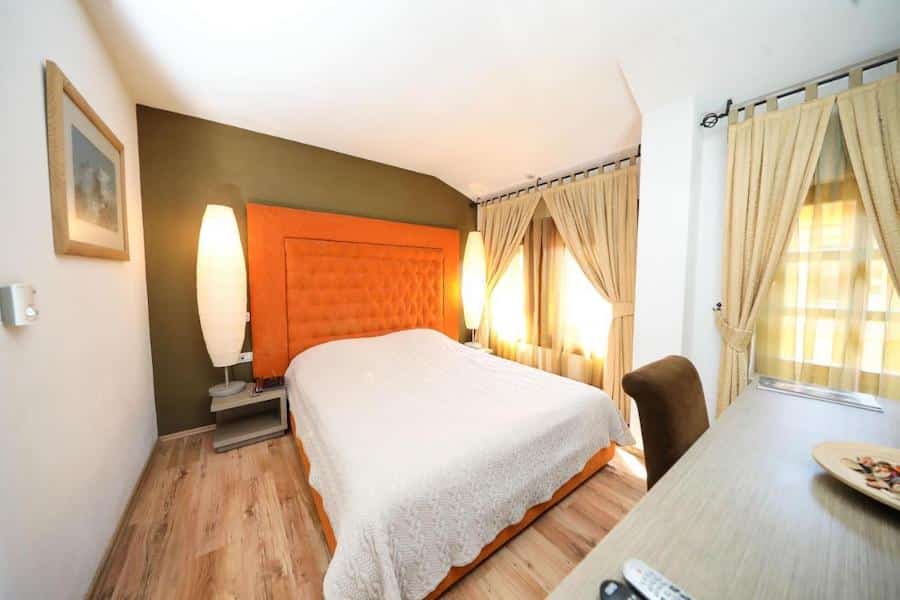
- Hotel Çarshia e Jupave: From €60/night. It’s a luxury option in the heart of the old bazaar, with a spa and restaurant.
- City Center Gjakova: One of the most popular spots in Gjakova, just steps from the city center, this property offers guests a comfortable and modern stay with top-of-the-line amenities.
- Conti Hotel & Restaurant: This cozy inn offers spacious rooms with all the amenities at an affordable price, plus, they provide complimentary breakfast.
Peja
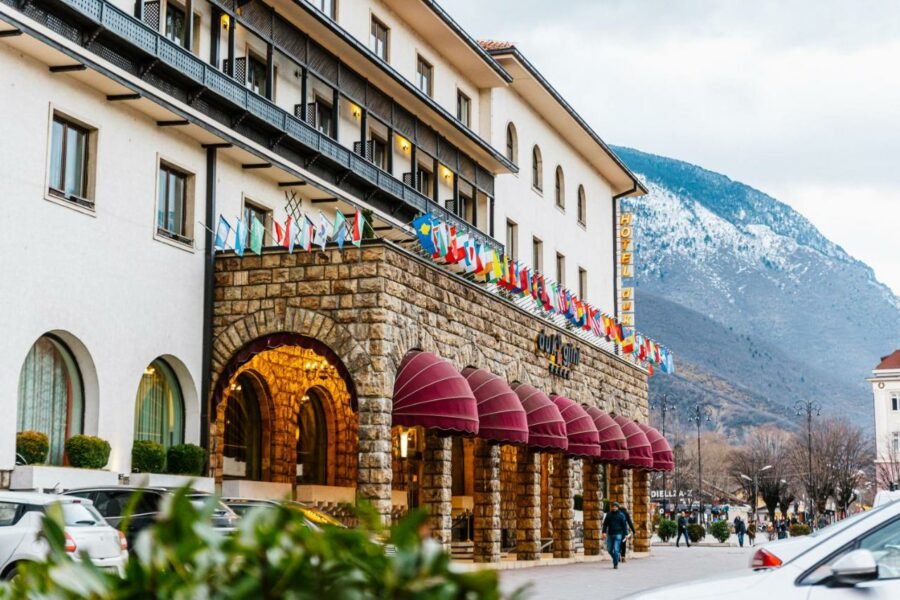
- Hotel Dukagjini: Starting at €80/night. It’s a combination of luxury and location, with a pool, spa, and views of the White Drin River.
- Town Hostel: Starting at €12/night. For the social traveler, this hostel’s location to the city center make it a welcoming and affordable choice.
- Sarac Hostel: With prices starting at €8/night, it’s perfect for travelers on a budget
- Green Paradise Villa: It’s a peaceful retreat with a garden and kitchen, offering privacy and space.
Rugova Gorge
- Ariu Guesthouse: From €25/night. A home away from home that offers a warm welcome with homemade food and a garden
- Wooden Cottage: From €50/night. For a peaceful escape, this cottage offers a fireplace and terrace in the heart of the forest
How To Get To Kosovo
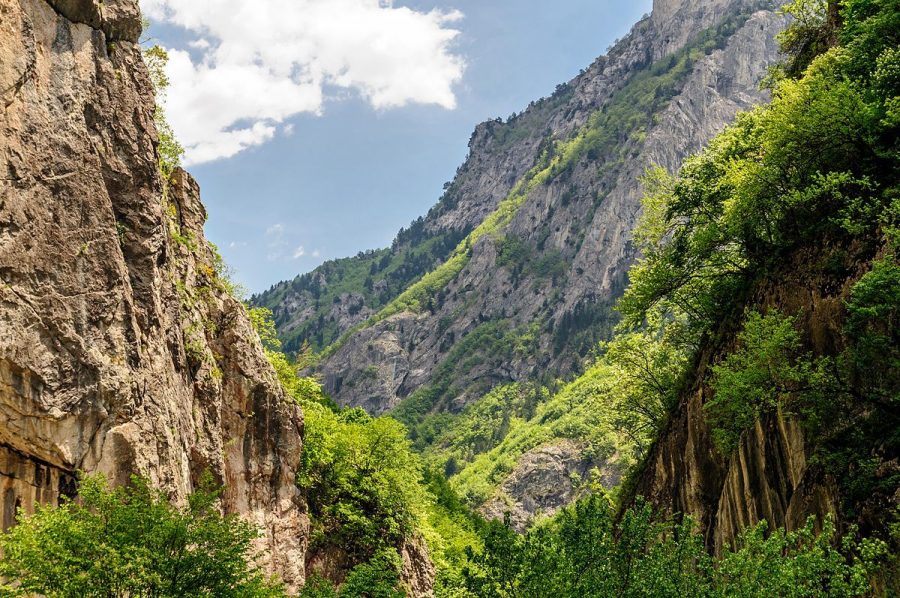
Traveling to Kosovo from major European hubs is relatively straightforward, thanks to a variety of transportation options available, including air travel, bus, and, to a lesser extent, trains. That said, there are some things to know about traveling to Kosovo.
Serbia To Kosovo Or Kosovo To Serbia
Since Kosovo unilaterally declared independence from Serbia in 2008, it has been the subject of much international dispute. Along with several other United Nations member states, Serbia does not recognize Kosovo as an independent nation, while over 100 different countries do. So, whether Kosovo is the youngest country in Europe or not even a country at all depends entirely on your perspective.
I suggest you read this guide to know a little about the history of Kosovo and about the border crossings.
“How To Enter And Leave Kosovo Legally From Serbia Or Other Countries” After that, you can then follow these general guidelines for reaching Kosovo from some major European cities:
By Air
The most convenient and fastest way to get to Kosovo from major European hubs is by air.
Pristina International Airport (PRN), also known as Adem Jashari International Airport, is the primary gateway to Kosovo. It is located approximately 15 km southwest of Pristina, the capital of Kosovo
Direct flights are available from several European cities, such as London, Zurich, Geneva, Frankfurt, Munich, Istanbul, and Vienna, among others. Airlines operating these routes include Wizz Air, easyJet, Swiss International Air Lines, Lufthansa, Turkish Airlines, and Austrian Airlines
Upon arrival at Pristina Airport, travelers can reach the city center or other parts of Kosovo by taxi, bus, or rental car.
By Bus
Buses are a popular and affordable option for traveling to Kosovo from neighboring countries and even from farther afield within Europe.
Direct and indirect bus services connect Kosovo with several European countries, including Germany, Switzerland, Belgium, the Netherlands, and Turkey
Major bus companies operate regular services to and from Pristina and other towns in Kosovo. These include bus connections from cities like Istanbul, Munich, Stuttgart, and Zagreb
Buses usually terminate in Pristina, from where you can take local buses or taxis to reach other destinations within Kosovo
By Train
Train connections to Kosovo are limited and less convenient than air or bus travel due to the lack of direct services from most European countries. However, it’s possible to reach Kosovo by train with a few changes.
The most viable train route to Kosovo is from Serbia, with a connection that goes to North Mitrovica. From there, travelers can continue their journey by bus or taxi into other parts of Kosovo.
Keep in mind that train services in the region can be subject to change, and cross-border relations may affect the availability and reliability of these services.
Driving
For those interested in a road trip, driving to Kosovo is an option, with well-maintained roads connecting Kosovo to neighboring countries such as Albania, North Macedonia, Montenegro, and Serbia.
Ensure you have the necessary car insurance and documentation for crossing international borders in the Balkans and be aware of the specific entry requirements at each border, as political sensitivities may affect travel between Serbia and Kosovo.
Getting Around Kosovo
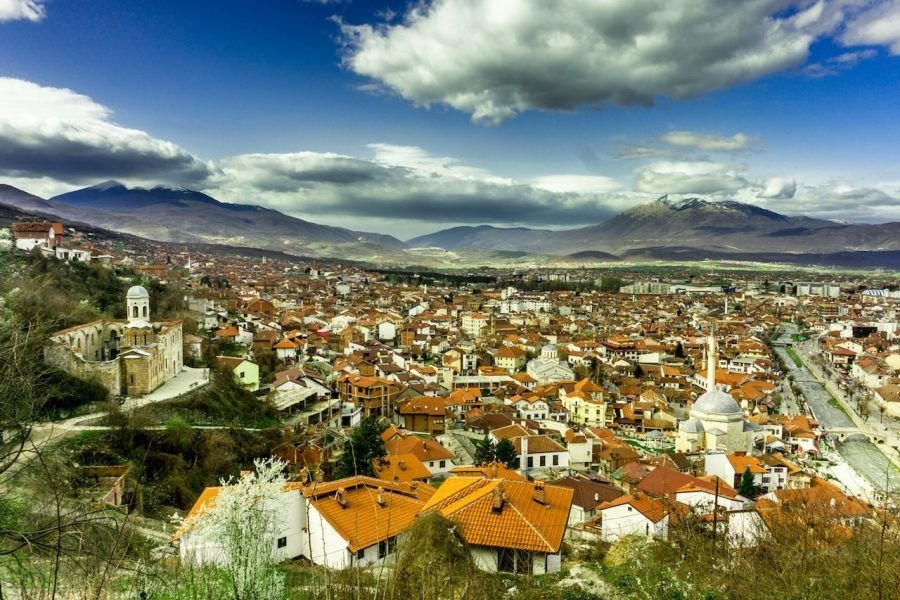
By Bus
Buses in Kosovo are the lifeline of transportation, connecting major cities, towns, and some rural areas. They’re frequent, reliable, and wallet-friendly. Tickets can be purchased on board or at bus stations.
By Taxi
Taxis are abundant and inexpensive, especially in urban areas. For a hassle-free experience, agree on the fare in advance, opt for a metered ride, or use a taxi app such as Gjirafa Taxi or Taxi Kosova.
Rent A Car
Renting a car offers the ultimate flexibility to explore Kosovo’s hidden gems at your own pace. Car rentals are readily available in Pristina and other cities. Prices average around €30 per day and are a convenient option for those who wish to venture off the beaten track.
Cycling
For an eco-friendly and enjoyable way to travel, consider bicycling. Kosovo is increasingly accessible to cyclists, with bike rentals available in Pristina, Prizren, and Peja. It’s a great way to explore the country’s routes, with rentals averaging €10 per day.
Move This Adventure To Your Inbox & Get An Instant Freebie

No spam. Unsubscribe at any time.
Navigating Cultural Etiquette In Kosovo
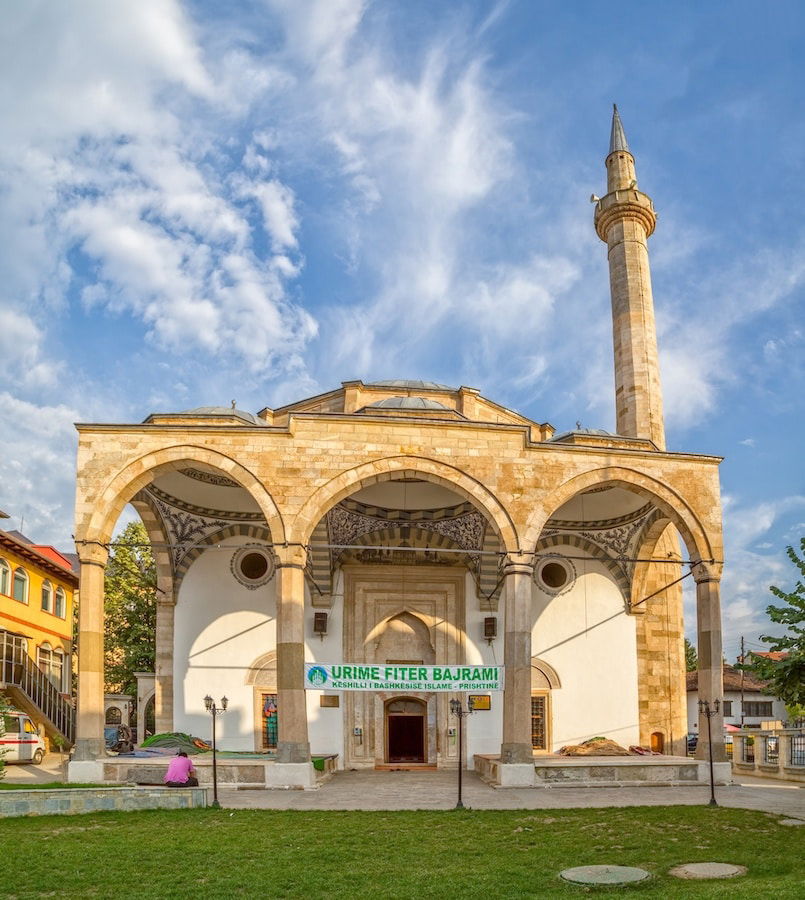
Understanding and respecting local customs in Kosovo is a sign of good manners and will enrich your travel experience. Here’s what you need to know about Kosovo’s culture, along with some essential dos and don’ts to help you navigate interactions and show respect to the locals.
Language
Albanian and Serbian are Kosovo’s two official languages, reflecting the country’s ethnic diversity. About 94.5% of the population speaks Albanian, and only 1.6% speaks Serbian. Other languages, including Bosnian (1.7%), Turkish (1.1%), and others (including Romani), account for a small percentage of the language distribution.
That being said, English is widely spoken among the youth and in urban areas, and some knowledge of German, Turkish, or Italian is also common.
We recommend learning a few basic phrases in Albanian or Serbian to make a positive impression. Simple greetings can open doors to warm interactions!
Greetings
- Albanian: Mirëdita (Good day), Si je? (How are you?)
- Serbian: Dobar dan (Good day), Kako ste? (How are you?)
Thank You
- Albanian: Faleminderit
- Serbian: Hvala
Yes/No
- Albanian: Po (yes), Jo (no)
- Serbian: Da (yes), Ne (no)
Religion In Kosovo
Kosovo’s religious community is mainly Sunni Muslim, with significant Orthodox Christian and smaller Roman Catholic communities
When visiting religious sites, remember to dress modestly, remove shoes, and keep in mind that women may be required to cover their heads. Always ask before taking photographs and respect worshippers by not disturbing prayers or ceremonies.
Be aware of religious holidays and practices, such as not eating or drinking in public during Ramadan or recognizing different dates for Easter among Orthodox Christians.
Do’s And Don’ts
- DO show respect for local customs and traditions by being aware and asking questions when in doubt
- DO bring a small gift if you’re visiting someone’s home
- DO dress modestly when you’re visiting Kosovo religious sites
- DON’T engage in political discussions about Kosovo’s status or history without understanding the sensitivity of these issues
- DON’T refuse hospitality outright; instead, try to join in the generous spirit
Other Places To Visit In Kosovo
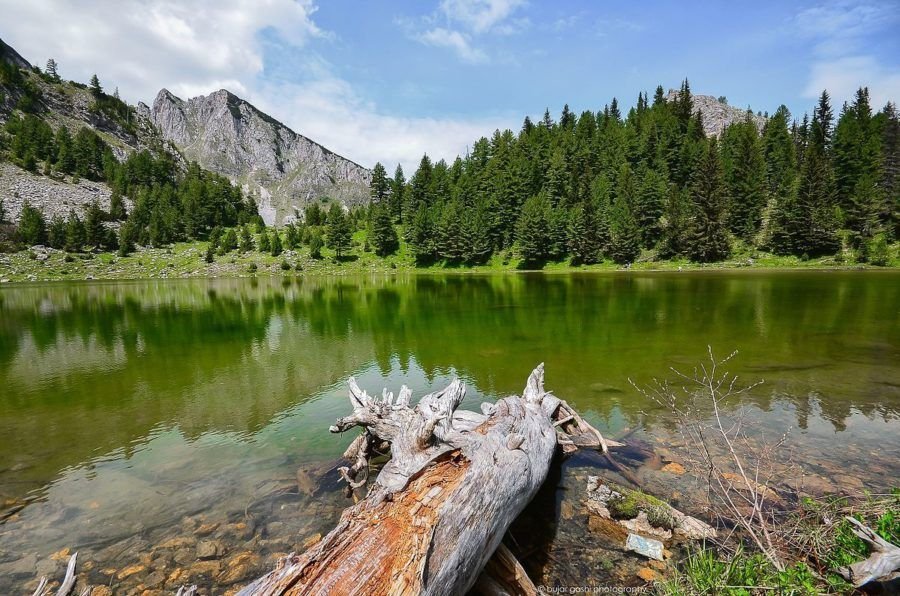
To extend your journey in Kosovo into a two-week adventure, consider adding these destinations and experiences to your itinerary.
Here are some of more best places to visit to expand your ultimate Kosovo itinerary:
1. Mitrovica
Split by the Ibar River, Mitrovica offers a unique perspective on Kosovo’s ethnic diversity. The city’s north and south sides present contrasting cultures and lifestyles.
Visit the Mitrovica Bridge, symbolizing the city’s ethnic divisions yet striving for unity and explore the Miner’s Park and Trepča Mines, showcasing the city’s industrial heritage.
2. Ferizaj
Ferizaj is known for its Ottoman-era architecture and the lively ambiance of its city center.
Visit the Sultan Murad Mosque, one of the oldest in the region and the Ethnological Museum of Ferizaj which provides insights into traditional Kosovar lifestyle and customs.
3. Brezovica
Head to the mountains for a couple of days in Brezovica, Kosovo’s premier ski resort located within the Šar Mountains National Park.
In summer, the area transforms into a hiking paradise with trails offering breathtaking views.
Enjoy outdoor activities like mountain biking and paragliding, or relax in the serene mountain environment.
4. Novo Brdo
Visit the Novo Brdo Fortress, a medieval fortress offering panoramic views of the surrounding landscapes. It’s a significant historical site that narrates Kosovo’s past.
Explore the ruins and learn about the area’s rich mining history, once vital for its silver deposits.
5. Ulpiana
Discover the ancient city of Ulpiana, one of the most important archaeological sites in Kosovo. This Roman and Byzantine city offers a glimpse into ancient civilizations.
Guided tours can help you understand the historical significance of the ruins and mosaics found here.
6. Kamenica
Visit the Archaeological Park of Kamenica Tumulus, which showcases prehistoric and early historical periods through excavated tombs and artifacts.
Explore the town’s cultural heritage and enjoy the local hospitality in cozy cafes.
Kosovo Travel FAQs
What should I pack for a trip to Kosovo?
Depending on the season, pack layers for different temperatures. Comfortable walking shoes are a must for exploring cities and nature trails. Don’t forget an adapter for European plugs!
Is Kosovo safe for tourists?
Absolutely! Kosovo is known for its hospitality and is generally very safe for travelers. As with any destination, it’s wise to stay informed of current events and take standard precautions.
Can I use credit cards widely in Kosovo?
Credit cards are widely accepted in major cities and tourist areas. However, it is advisable to carry some cash in smaller establishments and rural areas.
Itinerary For Kosovo Wrap Up

Kosovo has this unique blend of old-world charm and new-world hospitality that makes you feel at home and in awe, all at once.
Kosovo isn’t just a country; it’s an experience. From wandering through ancient bazaars in Gjakova to soaking in the natural beauty of the Rugova Gorge, every day here adds up to an unforgettable journey. And it’s not just about the places; it’s the people that truly make Kosovo stand out. There’s a genuine sense of hospitality here that’s hard to find elsewhere.
Whether you’re sipping coffee in a bustling café in Pristina or exploring the historic streets of Prizren, locals are always ready with a smile to make you feel welcome.
Now, if you’re wondering whether Kosovo should be your next travel destination, here’s my take: Absolutely. It’s the perfect mix for anyone looking to dive into a rich cultural experience, indulge in some stunning nature, and meet some of the friendliest people along the way.


Hi, Thank you for the amazing write up. We are visiting Kosovo this summer and wondered if it was best to stay in Pej or Gjakova or somewhere else, we have 3 nights followed by 2 in Pristina. We are looking for an authentic experience with less tourists. Many thanks in advance :)
For an authentic experience with fewer tourists you have to go to really unknown places and Pejë (Peja) or Gjakovë (Gjakova) are neither. Peja offers stunning natural attractions like Rugova Gorge and the Patriarchate of Peć, perfect for outdoor enthusiasts. Gjakova is known for its rich cultural heritage, including the Old Bazaar and Hadum Mosque, providing a relaxed and traditional urban vibe. Both towns offer unique local experiences and historical sites. If you prefer outdoor activities and nature, choose Peja. For a more urban and cultural experience, opt for Gjakova. Either way, you’ll enjoy an authentic and less touristy stay before heading to Pristina.